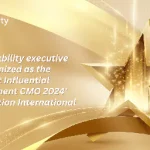Unlocking Value: Four steps to prepare your procurement organization for a successful M&A integration
By: Jake Taylor

Is your procurement organization prepared to integrate with another entity should corporate leadership make the strategic decision to grow the business through acquisition? Such deals are predicated on capturing synergistic benefits and operational improvements in a timely manner. Problematic integrations can occur when there is a disconnect between strategic goals and operational reality.
Procurement leaders, now more than ever, need to prepare for M&A integrations and the change management it will entail. On the positive side, the increased buying power and expanded supplier networks that are typically part of M&A can vastly open new opportunities to the organization. However, they also come with the daunting challenge of successfully and rapidly merging functions, teams, and technologies.
To ensure a smooth transition, and maximize the benefits of M&A, procurement executives must implement proactive strategies that both mitigate disruption and foster operational synergies. The following four steps can serve as a strategic guideline for preparation, measurement, and success by procurement leaders and teams as they navigate M&A.
1- Navigate Common Pitfalls
During mergers and acquisitions, procurement teams often find themselves at the center of operational change. Their tasks might include unifying procurement functions between organizations, or adapting to new processes, all of which are critical for a smooth transition and the resulting operations.
It’s beneficial for these teams to understand common problem areas to get out ahead of them. These typically include:
Technology integration
- Challenge: Merging incompatible procurement systems or migrating to a new platform.
- Impact: Data inconsistencies, workflow disruptions, and reduced visibility into spend.
Cost management
- Challenge: Balancing immediate cost-cutting pressures with long-term value creation.
- Impact: Risk of damaging supplier relationships or overlooking strategic opportunities.
Cultural alignment
- Challenge: Aligning different procurement philosophies, practices, and team dynamics.
- Impact: Resistance to change, reduced productivity, and potential talent loss.
Supplier relationship management
- Challenge: Consolidating supplier bases and renegotiating contracts.
- Impact: Supply chain disruptions, missed synergies, and potential compliance issues.
Talent retention and skill alignment
- Challenge: Retaining key personnel and aligning skills with new organizational needs.
- Impact: Loss of institutional knowledge and reduced operational efficiency.
By proactively addressing these areas, procurement leaders can create a solid foundation for a successful transition. The key lies in developing a comprehensive strategy that prioritizes clear communication, stakeholder engagement, and a phased approach to integration.
2- Assess for Success
Exceptional leadership starts with an accurate understanding of the state of your department. As the M&A process unfolds, take the time to benchmark your procurement teams and functions.
Focus on these key areas:
- Operational efficiency: Measure procurement cycle times, cost savings achieved, and contract compliance rates. These metrics offer insight into the effectiveness of your current processes and highlight areas for potential synergies.
- Technology landscape: Assess the compatibility and capabilities of existing procurement systems. Evaluate factors such as data integration potential, user adoption rates, and the ability to support future growth.
- Talent and skills: Conduct a skills gap analysis for your procurement team. Identify areas of expertise, potential redundancies, and opportunities for cross-training or upskilling.
- Supplier relationships: Analyze your supplier base, including spend concentration, performance metrics, and strategic partnerships. This will inform consolidation strategies and identify opportunities for leveraging increased buying power.
- Risk management: Evaluate your current risk mitigation strategies, including supplier diversity, geographical distribution, and contingency plans. This assessment is crucial for maintaining supply chain resilience during the transition.
- Cultural alignment: Gauge the cultural fit between merging procurement teams. Assess factors such as decision-making processes, communication styles, and performance management approaches.
Through careful measurement, procurement leaders can establish a baseline for comparison. This data-driven approach not only facilitates more informed decision-making throughout the M&A process but also provides a clear roadmap for realizing synergies and driving value. The depth and accuracy of this initial assessment will directly impact the success of your integration strategy and the long-term performance of your unified procurement function.
3- Prioritize Communication
In M&As, effective communication is a lifeline for procurement teams. It becomes the bedrock upon which trust, alignment, and successful integration are built. During these periods of significant change employees often experience uncertainty, insecurity, and heightened stress. The quality and clarity of leadership communication become especially important in managing against it.
Aim for communications that balance sharing essential information with an understanding of the human impact of organizational changes. Tactics may include:
- Increased transparency about the rationale behind M&A decisions articulating how they align with broader organizational goals while benefiting the procurement function.
- Establishing regular communication channels and consistent touchpoints – whether through town halls, team meetings, or digital platforms—to keep your team informed and engaged throughout the transition.
- Empowering your team through information and relevant data and insights. This not only helps them understand their progress but also enables them to make informed decisions in their roles.
By mastering strategic communication, procurement leaders can transform potential barriers into bridges of understanding and collaboration. Effective communication is about creating a shared vision and inspiring your team to collectively bring that vision to life.
4- Be Flexible
Flexibility is key for procurement teams navigating change in mergers and acquisitions. While planning sets the course, the unpredictable nature of M&A integration demands a level of adaptability that transforms initial strategies. Successful procurement leaders recognize that agility is a mindset that passes through every aspect of their operation. This means adjusting sourcing strategies in response to market shifts, refining the integration processes based on real-time feedback, fostering cross-functional collaboration to address emerging challenges, and maintaining technological flexibility to optimize solutions. It also requires cultivating a team culture that views change as an opportunity for innovation and growth.
To embed flexibility into the procurement function, leaders must create an environment that encourages creative problem-solving and rewards adaptability. This involves establishing forums for collaborative brainstorming, recognizing team members who contribute to successful strategy pivots, and investing in continuous learning to equip the team with a diverse skill set.
Looking ahead
Maintaining open communication channels is important to enable quick identification and resolution of issues as they happen. By embracing this agile approach, procurement teams can do more than just weather the storms of M&A integration—they can emerge as key drivers of value creation, turning challenges into opportunities for organizational advancement.
While M&A deals can strain procurement teams, procurement teams can implement these strategies to ease the transition and maintain operational efficiency.
Read the full article in Supply & Demand Chain Executive.
About Jake Taylor
Jake Taylor is an accomplished procurement and operations leader with more than 15 years of strategic consulting experience.
His areas of focus include strategic sourcing, category management, supplier negotiations, organization design, pre/post-merger integration, executive stakeholder engagement and end-to-end procurement transformations. Jake applies analytic and data-driven methods to help clients assess opportunities and to realize benefits. Prior to Arroyo Strategy, Jake worked in A.T. Kearney’s Procurement Practice with clients across numerous industries including industrial manufacturing, consumer packaged goods, technology, financial services and government. He’s still looking for a client in Antarctica to check off all the continents.
Jake holds a Bachelor’s degree in International Marketing from Virginia Tech and an MBA from the Thunderbird School of Global Management.
About Arroyo Strategy
Arroyo Strategy, a Jabil company, is the leading provider of procurement services, offering advisory, managed services, digital, staffing, and recruiting solutions. For more than 25 years, we have focused exclusively on helping clients elevate their procurement function.
We combine leading methodologies, analytics, market intelligence, and industry benchmarks with our uniquely flexible and customizable service delivery model. Global organizations of all sizes trust Arroyo Strategy to transform their procurement operations, drive growth, and reimagine what’s possible.
Let Arroyo Strategy help you reimagine your procurement capabilities.
Media contact:
Kathleen M. Pomento
Chief Marketing Officer | Arroyo Strategy
kpomento@arroyostrategy.com



